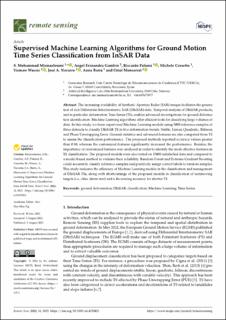| dc.contributor.author | Mirmazloumi, S. Mohammad | |
| dc.contributor.author | Gambin, Angel Fernandez | |
| dc.contributor.author | Palamà, Riccardo | |
| dc.contributor.author | Crosetto, Michele | |
| dc.contributor.author | Wassie, Yismaw | |
| dc.contributor.author | Navarro, José A. | |
| dc.contributor.author | Barra, Anna | |
| dc.contributor.author | Monserrat, Oriol | |
| dc.date.accessioned | 2023-05-10T09:14:09Z | |
| dc.date.available | 2023-05-10T09:14:09Z | |
| dc.date.created | 2022-11-09T10:13:15Z | |
| dc.date.issued | 2022 | |
| dc.identifier.citation | Remote Sensing. 2022, 14 (15), . | en_US |
| dc.identifier.issn | 2072-4292 | |
| dc.identifier.uri | https://hdl.handle.net/11250/3067447 | |
| dc.description.abstract | The increasing availability of Synthetic Aperture Radar (SAR) images facilitates the generation of rich Differential Interferometric SAR (DInSAR) data. Temporal analysis of DInSAR products, and in particular deformation Time Series (TS), enables advanced investigations for ground deformation identification. Machine Learning algorithms offer efficient tools for classifying large volumes of data. In this study, we train supervised Machine Learning models using 5000 reference samples of three datasets to classify DInSAR TS in five deformation trends: Stable, Linear, Quadratic, Bilinear, and Phase Unwrapping Error. General statistics and advanced features are also computed from TS to assess the classification performance. The proposed methods reported accuracy values greater than 0.90, whereas the customized features significantly increased the performance. Besides, the importance of customized features was analysed in order to identify the most effective features in TS classification. The proposed models were also tested on 15000 unlabelled data and compared to a model-based method to validate their reliability. Random Forest and Extreme Gradient Boosting could accurately classify reference samples and positively assign correct labels to random samples. This study indicates the efficiency of Machine Learning models in the classification and management of DInSAR TSs, along with shortcomings of the proposed models in classification of nonmoving targets (i.e., false alarm rate) and a decreasing accuracy for shorter TS. | en_US |
| dc.language.iso | eng | en_US |
| dc.publisher | MDPI | en_US |
| dc.relation.ispartofseries | Remote Sensing; | |
| dc.rights | Navngivelse 4.0 Internasjonal | * |
| dc.rights.uri | http://creativecommons.org/licenses/by/4.0/deed.no | * |
| dc.title | Supervised Machine Learning Algorithms for Ground Motion Time Series Classification from InSAR Data | en_US |
| dc.type | Peer reviewed | en_US |
| dc.type | Journal article | en_US |
| dc.description.version | publishedVersion | en_US |
| cristin.ispublished | true | |
| cristin.fulltext | original | |
| cristin.qualitycode | 1 | |
| dc.identifier.doi | http://dx.doi.org/10.3390/rs14153821 | |
| dc.identifier.cristin | 2071026 | |
| dc.source.journal | Remote Sensing | en_US |
| dc.source.volume | 14 | en_US |
| dc.source.issue | 15 | en_US |
| dc.source.pagenumber | 1-20 | en_US |

